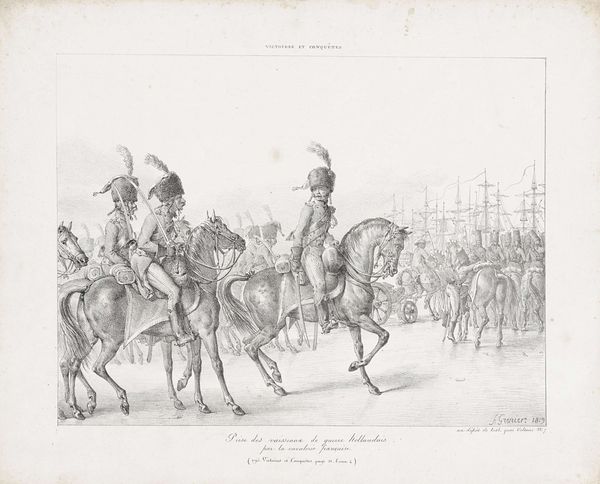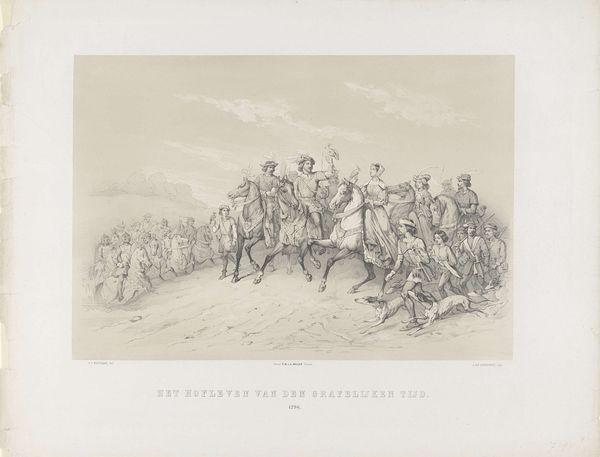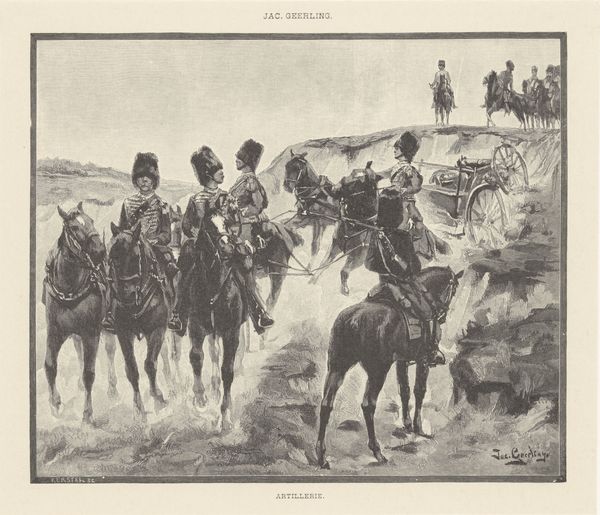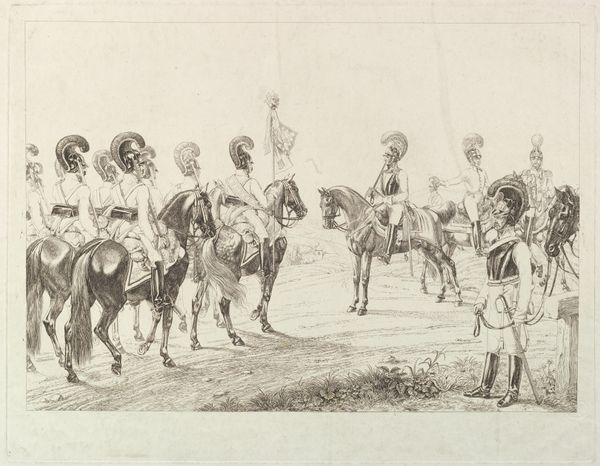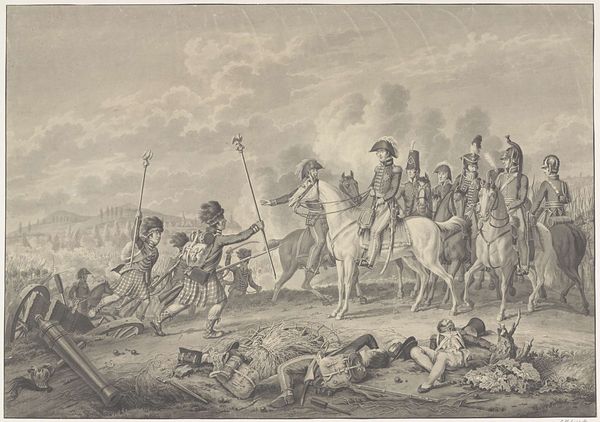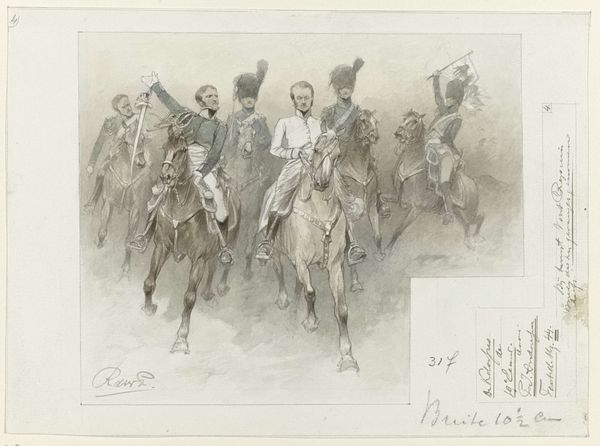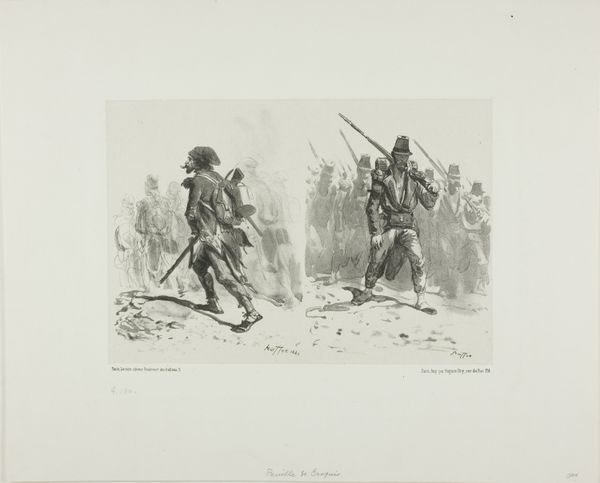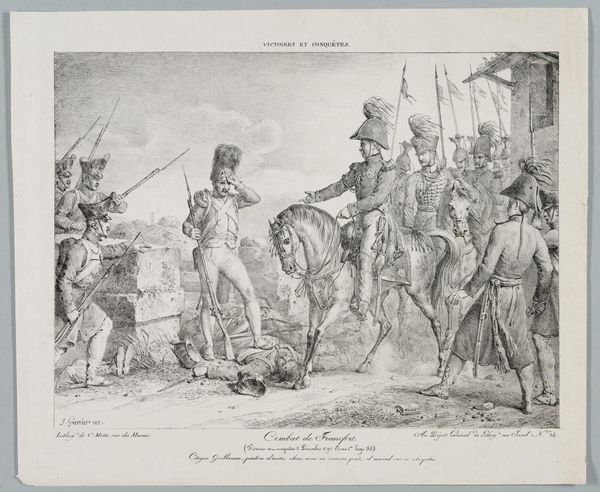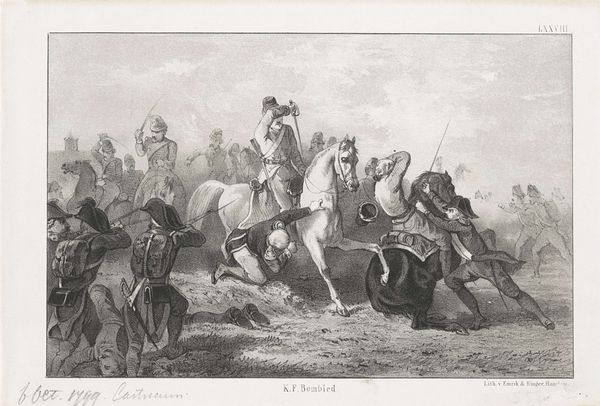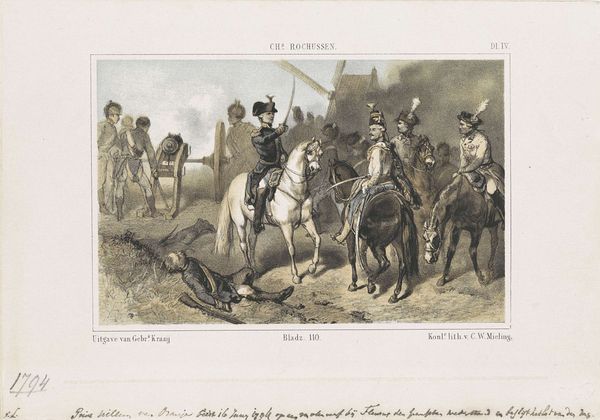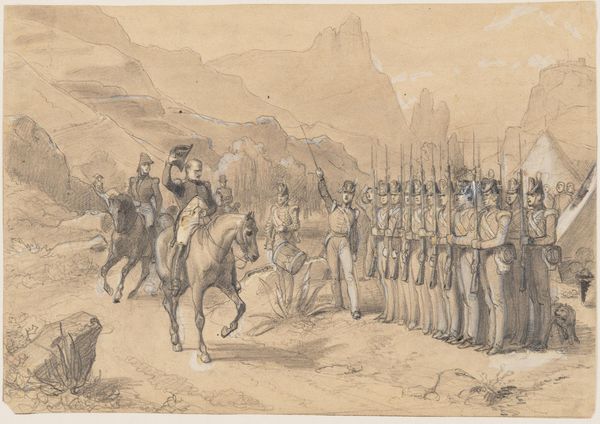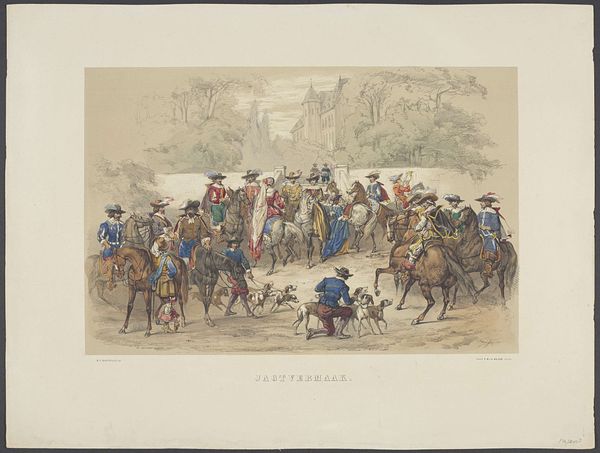
Ontwerp voor illustratie voor De Kolossus der Negentiende Eeuw door P.J. Andriessen (Groot Plaat, blz. 153); scène uit het leven van Napoleon 1877 - 1942
0:00
0:00
drawing, paper, graphite
#
portrait
#
drawing
#
narrative-art
#
paper
#
graphite
#
genre-painting
#
history-painting
#
academic-art
Dimensions: height 236 mm, width 336 mm
Copyright: Rijks Museum: Open Domain
Curator: Looking at this artwork, there's a palpable sense of expectation in the air. Editor: That’s a fitting observation, given we’re examining a drawing intended to illustrate "The Colossus of the Nineteenth Century," a biographical tale about Napoleon by P.J. Andriessen. This graphite-on-paper piece, likely crafted between 1877 and 1942 by George Lodewijk de Wetstein Pfister, captures a scene brimming with historical weight. My immediate impression is one of grandeur, meticulously constructed yet somehow dreamlike due to its monochromatic palette. Curator: Indeed. Note how Napoleon, positioned almost centrally, commands attention, the figures surrounding him serving as echoes of his influence, his power extending both outwards and back in time to reference similar colossi of history. The grey tones add to a certain detachment from events, almost ghostly. It evokes collective memory itself – how we conjure up such figures and project narratives of might onto them. Editor: I agree. What truly intrigues me, formally, is how the artist utilizes line and shading to guide the eye through the composition. Notice the strategic placement of the figures—the layering creates a three-dimensional effect, emphasizing depth within what could easily be a flat plane. And then there's the contrast between the precisely rendered figures in the foreground and the more loosely sketched background. The meticulous detailing around the facial features of the subjects give way to the open plane. Curator: Consider the symbolic importance of the horses. They are symbols of war, but also aristocracy, their stances lending dynamic movement. Even their colours as the greyscale permits the interpretation of black and white horses is symbolic to cultural memory of these concepts, adding dynamism but further hinting at division, conflict. Napoleon and his era, often remembered with both reverence and criticism. Editor: The composition teeters beautifully between detailed portraiture and open landscape. The restrained palette directs attention to the nuances of texture. Through careful analysis of its forms, the illustration moves far beyond simple narrative, speaking more broadly about power and the performance of history. Curator: Agreed. The performance. As a potential visualisation to be consumed through image and text, there are also additional performances of symbolic memory in the role that a colossus is, not just by the pictured individuals but by the act of witnessing in our contemporary time. Editor: What's initially grasped as a depiction of a moment expands when we inspect formal techniques in the piece: composition, form, etc. — all acting as a language system. Curator: And I'd add that understanding the symbols here, in relation to their time and ours, is crucial to a thorough assessment. They bring their historical memory with them.
Comments
No comments
Be the first to comment and join the conversation on the ultimate creative platform.


